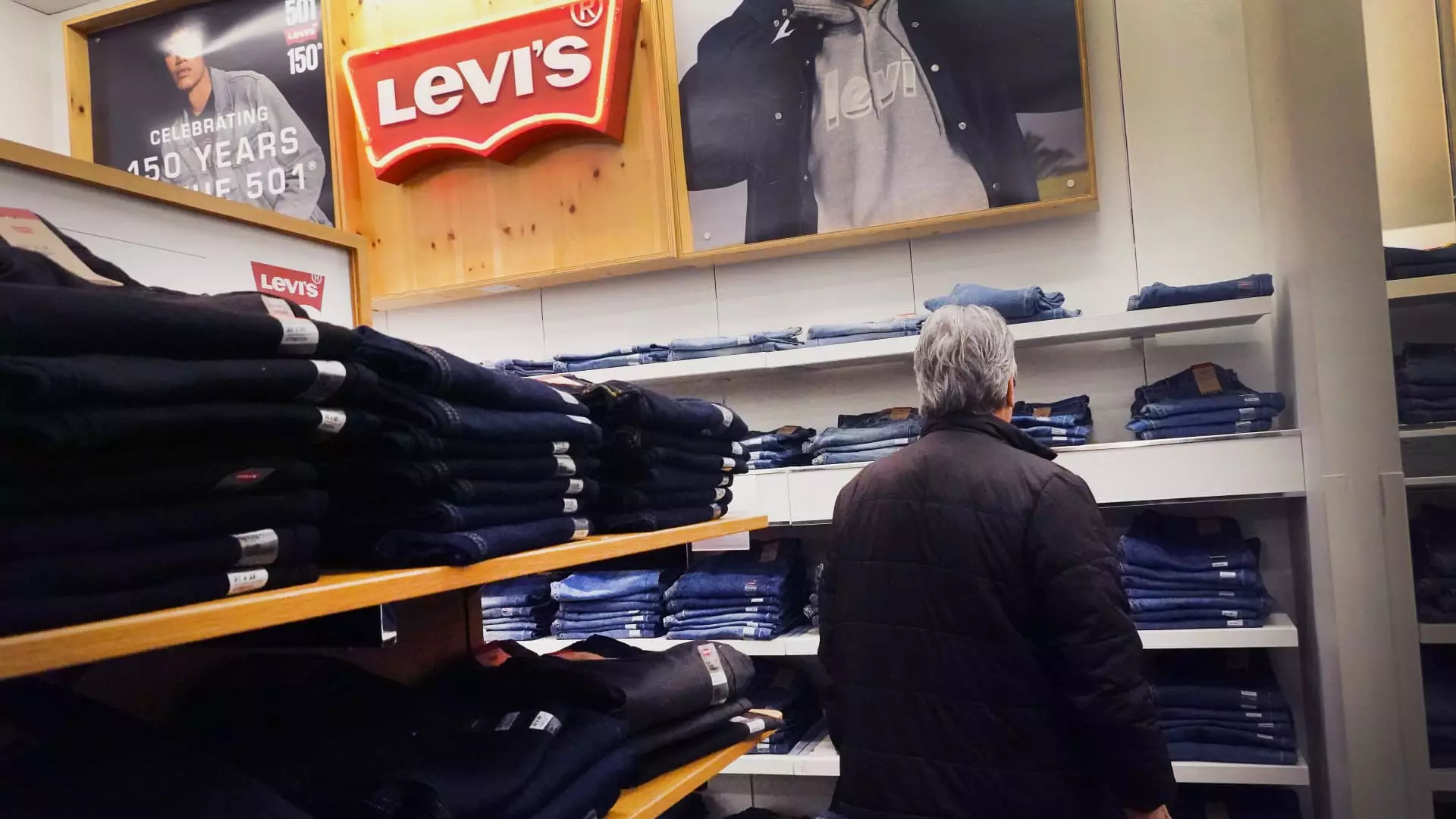Levi Strauss & Co. recently raised concerns regarding its impending fiscal performance, revealing expectations for a decline in sales between 1% and 2% for the current financial year. This forecast deviates significantly from Wall Street’s optimistic projections of a 3.7% increase. The company’s CEO, Michelle Gass, explained that this anticipated downturn in revenue is attributable not solely to diminished consumer demand, but primarily to economic factors such as adverse currency exchange rates, one less selling week than previously anticipated, and the financial repercussions stemming from their Denizen and footwear lines, which have seen declining revenues. Following this announcement, Levi’s stock took a hit, dropping approximately 6% in after-hours trading as investors digested the dismal outlook.
While this adverse forecast casts a shadow over future earnings, it’s crucial to highlight the company’s strong performance in its fiscal fourth quarter, which concluded on December 1. During this period, Levi reported a net income increase, with earnings per share rising to 50 cents, surpassing analyst estimates of 48 cents. Revenue surged to $1.84 billion, a notable rise from the previous year’s $1.64 billion, predominantly due to an 8% growth in organic sales, which exclude the impact of foreign exchange and divested businesses. This indicates that despite the upcoming challenges, Levi has managed to sustain a healthy financial footing in the short term.
Strategic Adjustments Under New Leadership
Since Gass assumed the role of CEO, she has aggressively pursued strategic reforms aimed at optimizing Levi’s business model. Recognizing the need to adapt to shifting consumer behavior, particularly among women—who typically represent a significant purchasing demographic—Gass has worked to enhance the brand’s appeal to female shoppers. This strategy has begun to bear fruit, with women’s apparel now constituting 36% of Levi’s overall business, showing a slight increase compared to the previous year. Gass’s collaboration with Beyoncé, which involved a strategically timed marketing campaign following the artist’s album release, exemplifies her intent to revitalize the brand’s image and appeal.
Regional Sales Performance and Consumer Trends
The fourth quarter showcased robust sales growth across various regions and channels. Sales in the Americas rose by 12%, while Europe saw an impressive 15% increase, and Asia expanded by 9%. The direct-to-consumer segment, in particular, was a bright spot, with a remarkable 19% increase. This segment now represents 45% of Levi’s total organic net sales, reflecting a shift towards online sales, a trend accelerated by the pandemic. The successful uptick in different demographics demonstrates Levi’s ability to adapt to market demands and consumer preferences.
As Levi navigates the complexities of global trade and economic uncertainties, there is heightened attention on the potential impact of proposed tariffs, particularly under the recent administration. Harmit Singh, the company’s finance chief, noted that while less than 1% of their products originate from China—facing potential tariffs—Levi’s overall exposure to proposed duties in markets such as Canada and Mexico remains minimal. This positions Levi as relatively insulated from certain tariff pressures; however, the company is preparing for possible adjustments that could affect pricing strategies. Singh emphasized a commitment to minimizing impacts on consumers while also safeguarding the company’s financial integrity.
Despite the anticipated challenges, Levi remains optimistic about future growth prospects, particularly through the Beyond Yoga brand and the athleisure sector. Though the company has reported significant impairment charges related to Beyond Yoga—accumulating $201.6 million since its acquisition—it recognizes the substantial market potential within this category. With Nancy Green at the helm, a leader notably successful in scaling athleisure brands, Levi expresses confidence that this segment can be revitalized to meet growing consumer demand.
While Levi Strauss faces headwinds in its forthcoming fiscal year, the company has recently demonstrated resilience despite external economic pressures. The strategic shifts under Gass’s leadership and an emphasis on expanding into female demographics and emerging product categories lay a foundation for eventual recovery, setting the stage for a dynamic future amidst a rapidly evolving retail landscape.

